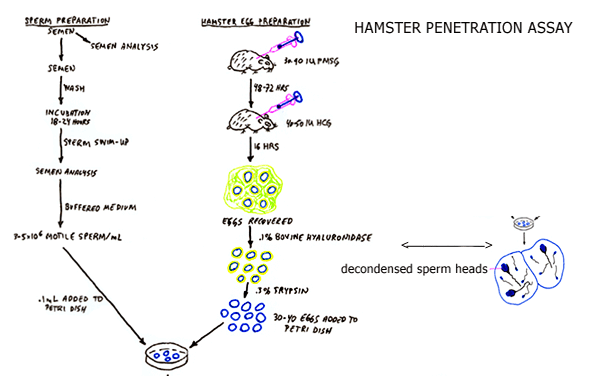|

The sperm (or hamster) penetration assay assesses the ability of human sperm to enter “zona pellucida (shell) free” hamster eggs. This has been proposed as a valuable sperm “function” test, but has not been accepted as such by many infertility specialists.
Sperm of one species is not able to fertilize the eggs of another species due (largely) to specific properties of the zona pellucida (shell). If the shell is removed from the eggs using digestive enzymes, cross-species fertilization is possible.
In the sperm penetration assay (SPA) hamsters undergo ovarian hyperstimulation on day 1 of the estrous cycle using PMSG (pregnant mare serum gonadotropin, which includes FSH), 2-3 days later the eggs are triggered to ovulate with hCG, multiple mature eggs are collected and treated consecutively with hyaluronidase and trypsin (to remove the cumulus cells attached to the zona pellucida and then remove the zona pellucida itself), and zona free eggs are then combined with (capacitated) sperm.
Sperm can be prepared using any standard isolation technique (such as those used for preparing sperm for intrauterine insemination). A variety of modifications for the SPA have been proposed, with modified tests often referred to as “optimized” SPAs.
Sperm that have penetrated the zona free hamster eggs have “decondensed” heads, which are much larger than the other surrounding sperm heads.
|

|